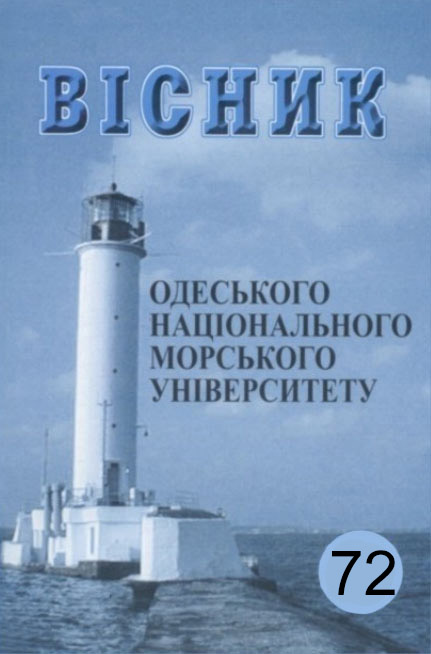Вплив відносного подовження корпусу судна на опір води в перехідному режимі руху
##plugins.themes.bootstrap3.article.main##
Анотація
Коли судно рухається в перехідному режимі, опір води зростає, і це явище вимагає більш ретельних розрахунків для оцінки величини цього опору. Відповідно, для судна необхідно вибирати більшу потужність двигуна, що тягне за собою більшу витрату палива і більш значне забруднення середовища. При розрахунку опору води враховують зміну площі змоченої поверхні судна, при русі з великою відносною швидкістю. За допомогою методу найменших квадратів було виведено формули для оцінки залишкового опору суден, що рухаються з різною відносною швидкістю FrV . Зроблено диференціацію формул для розрахунку відносного залишкового опору та отримано диференціальні рівняння. За допомогою цих рівнянь можна оцінити зміну залишкового опору, при різних числах Фруда та різних значеннях відносного подовження корпусу судна. Ці формули базуються на досвіді, отриманому в різних дослідних басейнах. У цій статті запропоновано порівняння результатів випробувань моделей яхти, патрульного катера і пасажирського порому із значеннями опору води, отриманими за допомогою статистичних формул
##plugins.themes.bootstrap3.article.details##
Посилання
2. Prabhat K Pal, Dugald Peacock. Preliminary design of high-speed monohull ferries. The Naval Architect. 2001. 9. P. 19-22.
3. Per Werenskiold, Tor H. Vollen. Preliminary design of semi-planing craft. Ship & Boat International. 1971. 2. P. 20-22.
4. Siu C. Fung. Resistance prediction and parametric studies for high-speed displacement hulls. Navale Engineers Journal. 1987. March. P. 64-80.
5. Melnyk O., Onishchenko O., Onyshchenko S., Voloshyn A., Ocheretna V. Comprehensive Study and Evaluation of Ship Energy Efficiency and Environmental Safety Management Measures. Studies in Systems, Decision and Control. 2023. 481. P. 665-679.
6. Kanifolskyi O.O. EEDI (energy efficiency design index) for small ships of the transitional mode. Trans RINA. Vol 156. Part B1. Intl J Small Craft Tech. 2014. P. 39-41
